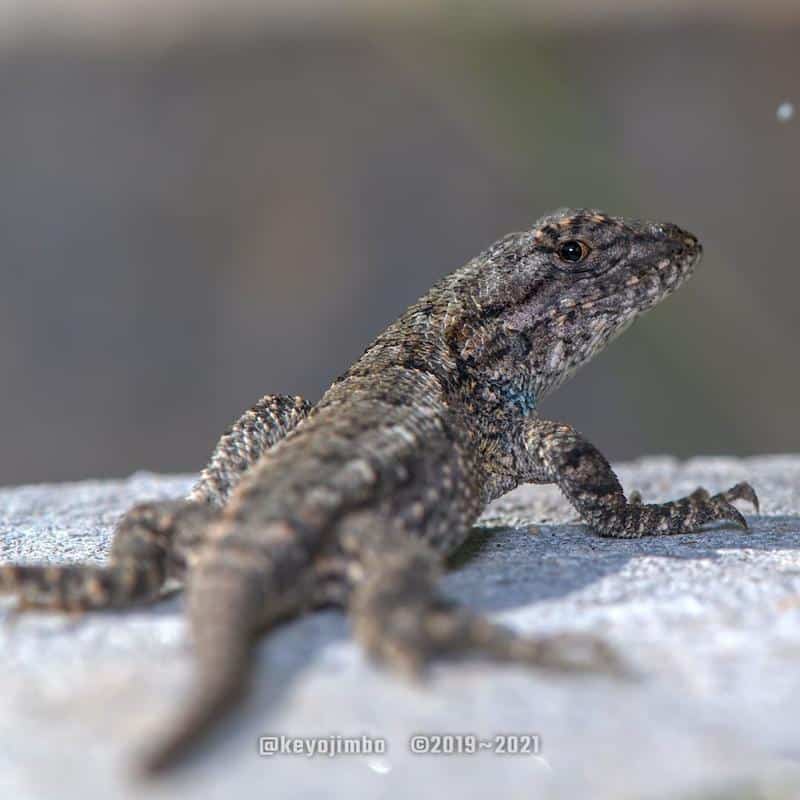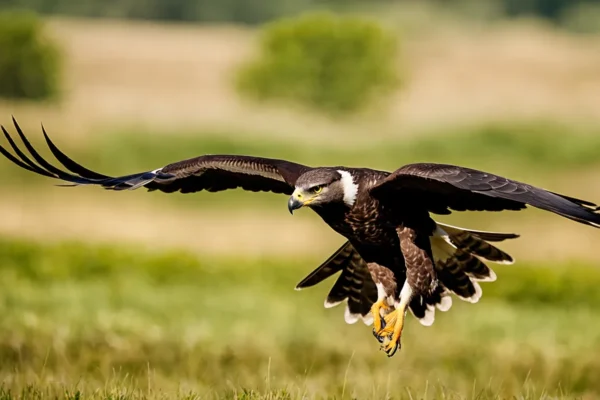So, are there any creatures that have more than one stomach? Both yes and no.
I assure you that this “yes and no” will make perfect sense at the conclusion of the reading. Whether you reside in Florida or anywhere else in the globe, you will find the variety and breadth of lizards in Florida to be interesting! Over fifty distinct kinds of lizards may be found in Florida, including a wide variety of skinks and geckos with eye-catching neck fans and brilliant colors. These days, the Sunshine State is home to some outstanding instances of both native and non-native lizards. Let’s dive right in to the amazing, scaly world of Floridian lizards now.
An Introduction to Florida’s Lizards
Fifteen of the many species of lizards that inhabit Florida are native, with the other species being foreign or imported. Maybe you’ve seen a few of them in your own backyard, relaxing on a warm rock or perching on a fence. Or maybe, when hiking a mountain track, you’ve saw a tail vanishing into the foliage?
For many reptiles, who need warmth to activate their cold blood, Florida’s hot and humid environment is ideal. The majority of lizard species run along on four legs, moving in a side-to-side motion. Lizards are often carnivorous, or at the very least insectivorous, and many of them use the energy-saving “sit-and-wait” strategy to capture prey.
The invasive lizards of Florida
While many non-native lizard species coexist peacefully with Florida’s native lizard species, some of the latter are regarded as invasive. A species is considered invasive when its population is expanding and self-sustaining; this is often bad news for native species since invasive species have the potential to outcompete them.
As it happens, Florida leads the world in terms of invasive reptile species—probably not the first thing a Floridian would brag about! Reptile species flourish in the subtropical environment, and as a result, a few invading lizards have seized the chance to proliferate.
See here for further information if you want to know more.
A few Examples of invasive lizards in Florida
1. Anole Brown

This little lizard came from Cuba to Florida. The native Green Anole is really endangered in Florida because to the abundance of invading Anoles that outcompete it for food and habitat.
Brown anoles have colors ranging from brown to gray, and their backs are often patterned in white or yellow. Their ability to live in a variety of settings and their tendency to stay on the ground make them one of the most prevalent lizards in Florida.
2. Tokay Gecko

Despite being native to southeast and eastern Asia, tokay geckos have spread around the world as a result of unintentional cargo transfers or the pet trade, in which they are either purposefully released or manage to escape. There are two color variations: black-spotted and red-spotted, with spots ranging in hue from red to pale yellow.
This type of gecko is often introduced into Florida’s cities to combat cockroaches, since they are one of its primary food sources. Sadly, they have also become an issue as they devour a lot of local frogs and birds.
3. African Redhead Agamas

A magnificent species with a blue to indigo body and a vivid orange head. When the lizards have warmed up completely from their sunbathing, their vibrant hues become even more vibrant. African Redhead Agamas live in groups consisting of a few females, a dominant male, and a few male subordinates. The males fight it out to be the leader of the region, which is centered around a tree or big stone where the group congregates. To be allowed to mate with females in the group, subordinate males must destroy the leader.
This large species is seen as an invasive menace to the natural wildlife of Florida since it preys on some of the state’s most fragile native species.
4. Green Iguana

This species is originally from South America, but since it has no natural predators, it has crossed the border and thrived in Florida. As a type of herbivorous lizard, they are found almost everywhere, feeding indiscriminately on plants. They dig deep tunnels to form egg-laying chambers, which often lead to erosion issues.
The biggest lizard in the Americas is the green iguana. Unless they are mating or producing eggs, they spend the most of their time in trees, making them an arboreal species. They protect themselves from danger by using their sharp teeth and tail spikes.
5. Tegu (Black and White) from Argentina

Not to mention, this enormous lizard poses maybe the biggest danger to Florida’s natural species of reptiles. Tegus were formerly held as exotic pets, but after being carelessly released into the wild, their number has quickly grown.
Their omnivorous diet—they will devour plants, birds, animals, eggs, and other reptiles—may be the reason for their success. There has been a great deal of study done on the apparent destruction they have caused, and eradication initiatives have been put in place.
Several Examples of Native Lizards in Florida
It’s time to go from the depressing world of invasives to the fascinating world of native lizards in Florida! A lizard species must have evolved from its present habitat and adapted to its surroundings in order to be considered a native species. Numerous native species have occupied ecological niches by becoming specialists in certain microhabitats, for example. This often makes them distinct or exclusive to a certain area. Let’s examine a few outstanding instances.
1. Verdant Anole

The Green Anole is the only native species among the several anoles found in Florida. Compared to the elusive Green Anole, which successfully blends in with the surrounding vegetation, the invasive Brown Anole (mentioned above) is far more common.
The amazing magenta neck fan, or dewlap, that this species uses for defense or in courting displays, is well-known. Males have bigger dewlaps than females, which they will enlarge to indicate their intention to mate or to compete with other males for territory.
2. Racerunner

A really unique lizard with six stripes ranging in color from yellow to green-yellow down its back. It can sprint up to eight meters per second, or up to eight miles per hour, in order to flee danger, true to its name.
The dry, open habitats that six-lined racerunners enjoy allow them to luxuriate in scorching temperatures that assist stimulate them and enable them to attain their maximum speeds. They will take cover in their cool burrows at night to evade nocturnal predators. This species mostly eats insects, although when they are most active, they may diversify and take in bigger prey.
3. Eastern Glass Lizard

With only a quick glance at this species, one may mistake it for a snake rather than a lizard! Actually, one kind of lizard that lacks legs is the Eastern Glass Lizard. It may be distinguished from a snake by two important characteristics: the presence of eyelids and earholes, which snakes lack.
The hues vary from brown to black, adorned with exquisite green-yellow specks. In addition to wetlands, coastal regions in the vicinity of sand dunes are home to Eastern Glass Lizards. When frightened, it will easily snap off the tip of its tail—a bizarre trait shared by all lizards! The lizard uses a behavior known as autotomy to elude a predator; it does this by wriggling its tail tip as it sprints off!
4. Broadhead Skink

The Broadhead Skink, named for its orange-tangelized head, is mostly found in forested environments. They may have five stripes going along their sides and back, either yellow or white. Although this species mostly consumes insects, it sometimes consumes other tiny reptiles.
When startled, one of their avoidance strategies is to bolt up a tree at top speed. If they are caught, they could even swim or hide behind trash to stay out of harm’s way and provide a vicious bite! Regrettably, domestic cats are a danger to them since their population is declining.
5. Eastern Fence Lizard

It’s possible that you’ve seen an Eastern Fence Lizard perched on your fence if you live in Florida. Additionally referred to as:
the prairie lizard
fence quickly
lizard in gray color
gravid reptile
fence lizard in the north
pine lizard
Their coloring is not very noticeable and is better suited for concealment, but up close, their keeled scales—scales with ridges running through them—form a beautiful, intricate pattern. The necks of males contain a patch covered with electric blue scales. They are often seen lounging on both man-made structures like fences and log piles as well as natural elements like stumps and rock heaps.
An invasive species called Red Imported Fire Ants poses a hazard to Eastern Fence Lizards. The lizards become venomous after being bitten by these fire ants. In addition, they devour the lizards’ eggs and outcompete them for territory. Though egg predation cannot be prevented, Eastern Fence Lizards may learn to fend against ant attacks by twitching their bodies.
FAQs Regarding Florida Lizards
Geckos, Skinks, or Lizards?
Many people are unsure if geckos, skinks, and lizards belong in different categories. What distinctions exist? To make things a bit simpler, let’s dissect it:
Lizards include skinks and geckos! Five distinct groupings within the Squamata order—which also contains snakes and amphisbaenians—are together referred to as lizards.
Skinks are members of the Scincomorpha genus of reptiles. They differ widely, although they share some characteristics, such as:
tubular bodies and heads fashioned like cones
round, smooth scales on the body
They have blinking ability!
mostly throughout the day
Angular toes
Geckos are members of the biggest group of lizards, Gekkota. Among their distinguishing qualities are:
slender necks and rounded bodies
Greasy, spongy skin with granular scales
They are unable to budge!
mostly nocturnal
conductive toes for climbing
Why Are Lizards Beneficial?
Although they are fascinating to study about and stunning to look at, you may be wondering whether lizards have any practical uses. Without a doubt, the answer is yes. These are only a few of the many reasons:
Since many lizards eat insects, even those regarded as pests, they aid in the management of insect populations. Befriend any lizard you discover in your house! They may significantly lower the quantity of flies and other bothersome insects in the home. Avoid hurting them!
Numerous significant innovations have been influenced by gecko feet. The microscopic hairs on a gecko’s toes, which enable it to grasp even in damp environments, have inspired the creation of several products, including fabrics, furniture, medical dressings, and glue that can withstand moisture.
There are several compounds in lizards that may save lives. Blood clots may be treated using venom from animals such as the Komodo dragon. Diabetic patients may benefit from the saliva of creatures such as the Gila Monster.
Lizards, like all other animals, have a specific position in an ecosystem and contribute significantly to its overall health and biodiversity.
Where And How Can I See Wild Lizards?
Around the globe, lizards may be found in a variety of places. They often like hot, muggy weather, such as that which is found in Florida and other sub-tropical regions. Try periodically pausing while out on a stroll to get a glimpse of a sun spot within the foliage. Lizards may often be seen sunbathing in the sun among plants or heaps of rocks that provide an escape route in case they feel threatened.
In regions where lizards are common, you may try luring them into your garden by scattering broken pieces of pottery, building little stone mounds, and refraining from using pesticides on your land.
The best course of action is to do some localized study before going out and exploring! You never know who you may meet in your own neighborhood who could be scaly pals!
What Is a Lizard’s Life Cycle?
A lizard’s life cycle is often divided into three stages:
Emerging from an egg: the majority of lizard species produce clutches of eggs, but some, like mammals, can give birth to live offspring. Typically, soft eggs are placed in a cave or burrow. Like with birds, the female may sometimes incubate the eggs.
Juvenile stage: After hatching, juvenile lizards can defend themselves and search for food in the outer world right away.
Adult stage: Lizards are prepared to mate after they reach their maximum size. Although this procedure varies widely, it often entails the male making a wooing display for the female.






